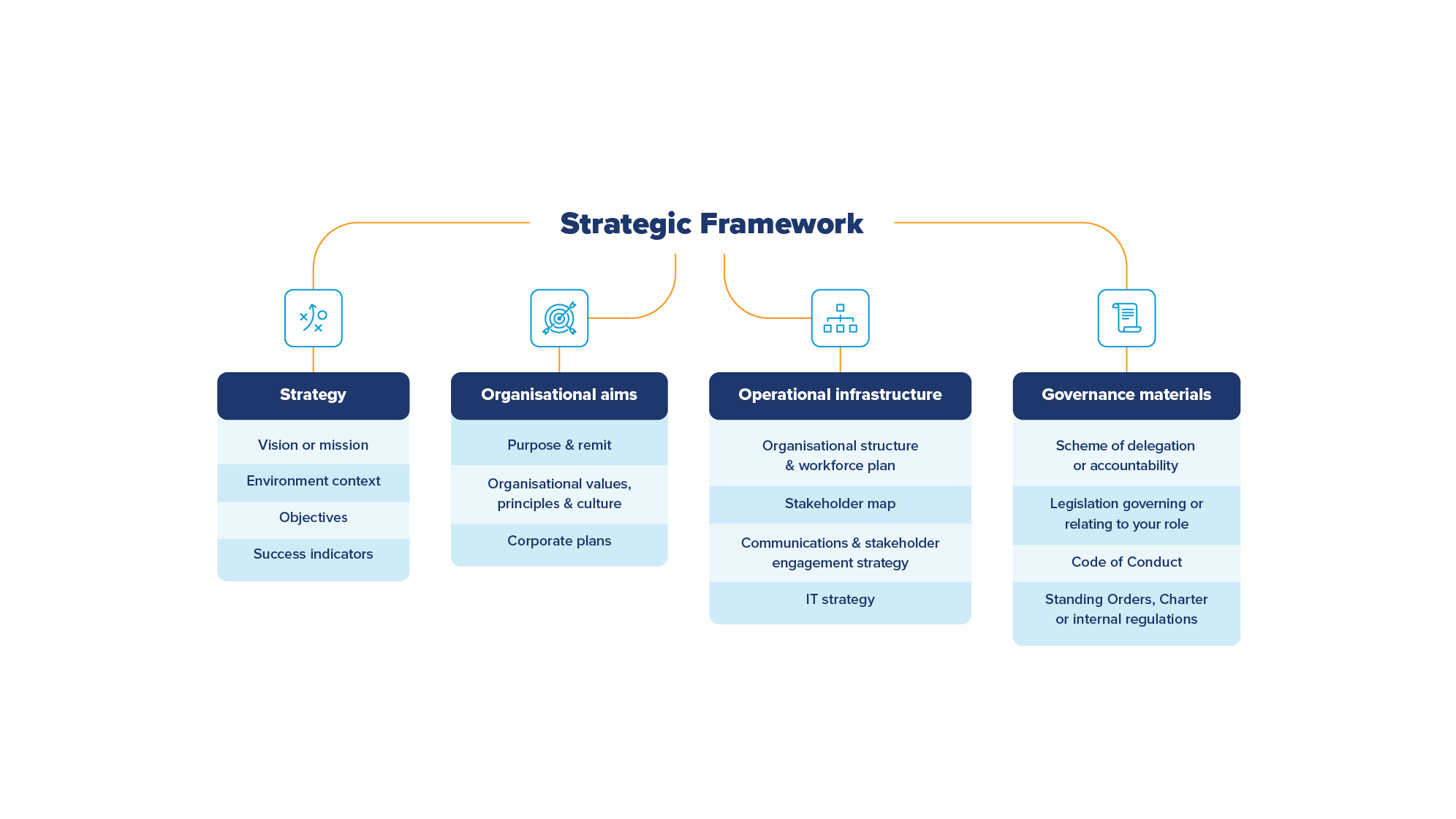Part 2: Strategic Framework and Planning

This part of Oversight—Toolkit for Political Finance Institutions assists oversight institutions in making sure that they have the strategic framework and planning in place to deliver effective oversight of political party and campaign finance. We strongly encourage you to give adequate attention to strategic and operational planning. These preparations take time but the effort will prove essential to your success in tackling the challenges in controlling the finances of political parties and election contestants.
Once you have considered the rules governing political finance in your jurisdiction, you next need to develop a strategic framework. The strategic framework will connect the legal framework within which you operate to on-the-ground implementation of your activities. A solid strategic framework will not only give life to the legislation; it will also enable you to deliver your oversight role in a more professional, proactive, and effective manner.
Political finance institutions come in various forms and structures, which will impact on how you set your strategy. The approach outlined below contemplates an agency set up with a chair and group of board members who, as a board, set the institution’s overall policy. Of course, in other cases one individual may be responsible for all aspects of the institution with assistance provided by a senior executive team. For our discussion, we use the term “board” to mean the person or group of individuals who decide the overall strategic framework for the institution.
Your strategy will stem from future-focused conversations with the board about what the main aim of the organization should be over the next few years. Achieving a high level of compliance with the law is a common aim among political finance oversight institutions but it far from being the only one. Whatever the key aim is for your organization, it will require a clear vision for the future—a powerful and succinct statement of how you want the world to be, with a set of medium- to long-term objectives you believe will deliver that vision.
Your strategy will also include an indication of the methods and tactics you will employ to achieve your goal. However, your strategy should be aspirational rather than operational. For example, you may include references to education and stakeholder engagement as methods and tactics to achieve a high level of compliance.
A written strategy is essential. But good planners also see strategy as a constant activity—something dynamic you are always doing as you observe changes in your environment and work out ways to respond to them. Having a strategy and vision to guide you is extremely important, but your strategic mindset should not end on the day of its publication. Strategy is a way of thinking about shaping the future, every day—it is not just a document.
What Is a Strategic Framework?
A strategic framework captures in one place your organization’s strategy, aims, activities, and ways of working. It sets out the architecture within which your oversight institution will operate and gives a blueprint for the successful delivery of your political finance aims.
As well as core elements such as your organization’s purpose, your framework may include an articulation of the legislative and governance framework within which you operate, and a map of your operating environment, stakeholders, and drivers. It should also describe how you are resourced and how you measure progress and success.
Why Is It Important To Have a Strategic Framework in Place?
It is a key tool that will put you in the driving seat.
It is an empowering tool, when used well, and provides some great communication assets. It also is essential for transparency and reporting purposes. Transparency is central to most political finance regimes and, as the oversight institution, you are uniquely well positioned to model transparency and accountability.
Capturing a clear expression of your organization’s purpose, vision, and positioning will help you to plan more effectively, which in turn will help you to deliver benefits. Your framework will also provide guidance about how you run your organization.
A “golden thread” should run through your framework. Your purpose and vision should inform your aims, your values, and your decision-making, so that these are aligned. This will greatly increase the likelihood of your efforts leading to success as an effective political finance oversight institution and of your staff seeing a clear link between their work and the overall vision.
Your strategic framework should not sitting somewhere in isolation. It should be a “go to” resource that is consulted frequently and updated regularly.
How To Develop a Strategic Framework
There is no single approach to developing a strategic framework. Each organization has its own starting point, its own culture and frame of reference, and its own preferences.
Some organizations choose to create their strategic framework in a single document, summarizing or referencing other documents. Others treat the framework as a suite of documents with an overarching contents page and executive summary, kept in one folder or location. This is a matter of choice. If you opt for the summary document method, make sure you have a process in place for reviewing and, if necessary, updating the summary document whenever related documents are updated.
The following diagram shows the elements that make up a strategic framework, which are discussed below.

Part 2: Strategic Framework and Planning includes the following sections:
Toolkit Navigation
Overview of Oversight, acknowledgments, and author information.
The glossary provides definitions for terms used throughout the Oversight.



